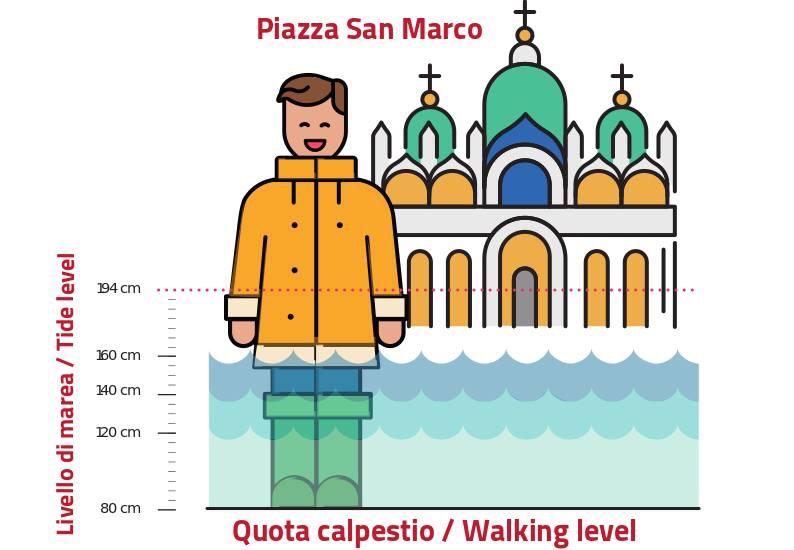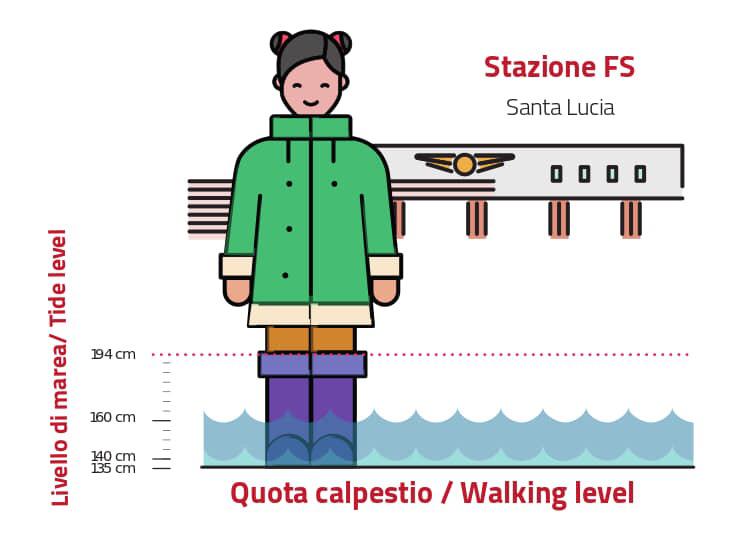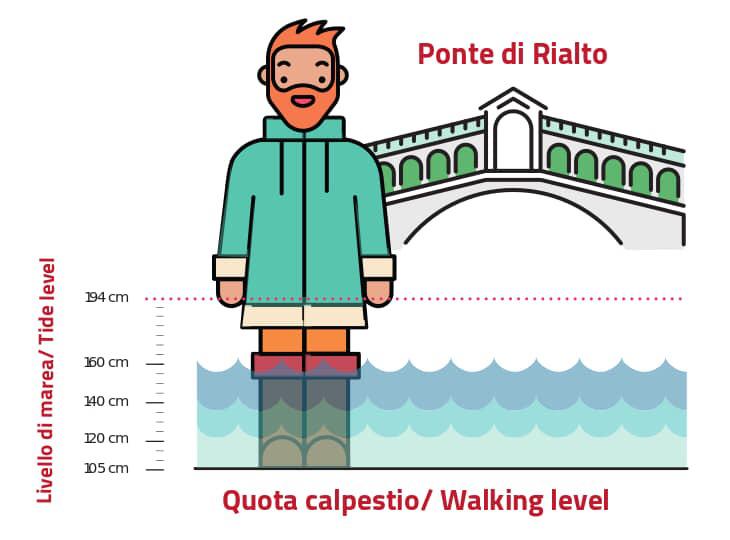HIGH TIDE
For a few days a year, usually in autumn and winter, you may find that there is high water in the allies (calli) and squares (campielli).
Because of a series of phenomena - the strong south-east wind (scirocco), the Adriatic sea-currents, low pressure, gravitational attraction of the sun and the moon - the sea level rises to flood the lower areas of the city. These are floods of no more than a few centimetres that only last a couple of hours. The tide then goes out and everything returns to normal.
As a rule, you only need to wear a pair of rubber boots; the water buses continue their service, although some routes may be modified, but nevertheless access to the whole city is guaranteed. You can still reach the main places of the city on foot thanks to raised pedestrian platforms that allow you to cross the points where water would otherwise prevent you from doing so.
But how high does the high water get?
When an excpetional tide is forecast, that i sover 140 centimetres, which rarely occurs, about 59% of the historical centre is flooded, with a level that goes from a few centimetres to about 60 centimetres in St.Mark's Square, the lowest area of the city.






